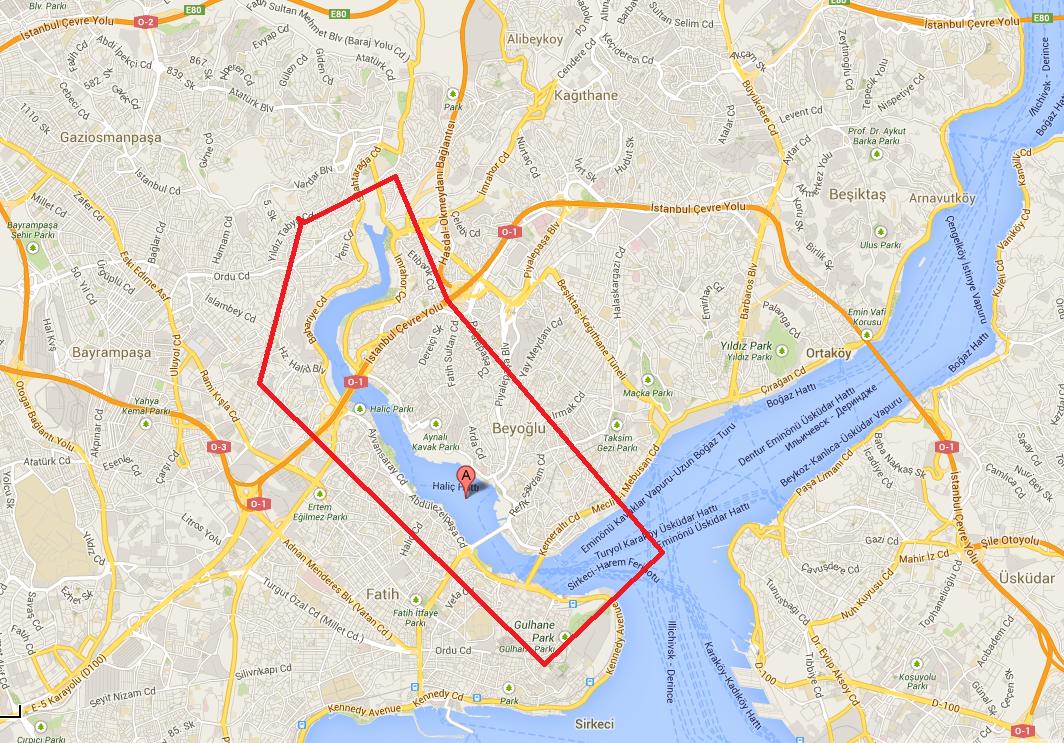


The editors of this web site selected the fourth track of the "From Russia With Love" soundtrack, titled as "The Golden Horn", as the kicker for the first CD of the Disk Coordinator 0014 series (officially designated as the Golden I CD of Volume I of thediskcoordinator 0014 project). To celebrate the 50th anniversary of the Bond movies, and therefore, the music of Bond, all the CDs contain kickers associated with the "From Russia With Love" soundtrack.
The CDs of this series were designed with specific speed and sound in mind. Golden II is very fast and the "007 theme", the fastest music of the early Bond movies, was used as its Kicker. Golden III was designated to represent familiar music of the Germantown Sunday Morning session and the instrumental version of a previously used kicker finalized that CD. In this case, we used the "From Russia With Love" instrumental track (Track 1 of the soundtrack) having used the vocalized rendition of "From Russia With Love" (track 10 of the soundtrack sung by Matt Monro) as the kicker of the G11 CD.
As mentioned,"The Golden Horn" is the 4th track of the soundtrack. Since the Golden I CD is of slower Israeli dance music, this selection seemed almost perfect as John Barry composed the music with a distinct Middle East flair.



However, if you are looking for this music while watching the movie, you are in for a disappointment as you will not hear it. It is obvious that the music was to be the background to Bond's meeting with Titania aboard one of the Bosphourus ferries in Istanbul which would pass the Golden Horn. For those needing a boost in geography, which includes this author, the Bosphurus is a strait linking the Black Sea to the Mediterranean. The Golden Horn is similar to our Chesapeake Bay in that is a flooded river that splits the city of Istanbul. We show some pictures of the geography above.
For some reason - probably because of changes in plot structure while the movie was still being shot (these changes were caused by the deteriorating health and ultimately the death of Pedro Armandariz who plays Darko Kerim in the movie) and the resulting shortened time of the edited scenes - this music was not included in the final version of the movie.
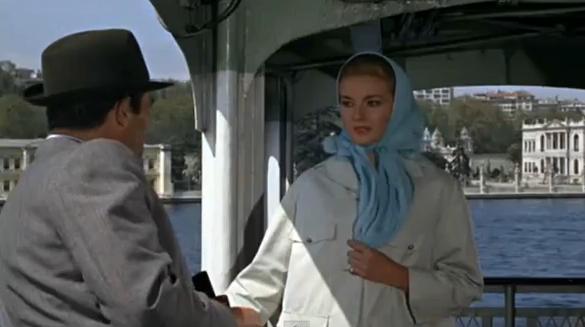
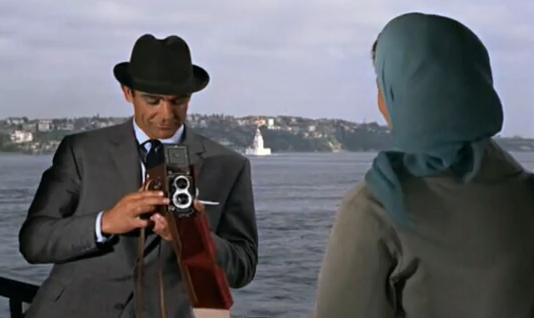
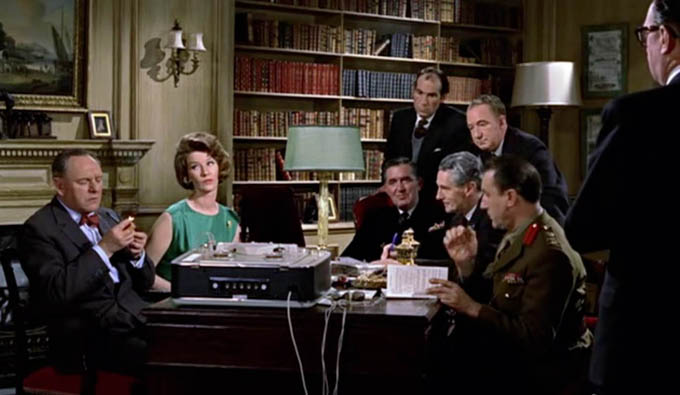
This is an interesting part of the movie for several reasons. No doubt the prime reason was the chance for the film producers and the director to spotlight Daniela Bianchi, who plays the heroine of the movie and was a runnerup as Miss Italy in the Miss World contest a few years prior to the film's production. A secondary effect was that this was part of the techniques that the director, Terence Young, used to liven up the plot and soften, if not humanize, the hero's visage.
Per the first reason, one always has to remember when and where Bond meets the girl. When Bond meets Titiana for the first time in both the book and movie, she is lying naked underneath the sheets of his bed. This occurs in the privacy of his room in the Istanbul hotel where he is staying. This is part of a complicated Russian (and in the movie, Spectre) plot which involves Bond with Titiana and a coding machine as the bait. One of the subplots of the book is which part of the bait Bond has more interest in.
However, public appearances of Miss Bianchi in the movie had to meet the norms of the time and this movie is shot in 1963 in Moslem Turkey. Therefore the scenes of Bianchi on the ferry have her in a white coat although this woman is stuningly attractive in anything she would wear. There are long shots of her reclining against the safety rail of the ferry while explaining the functions of the Russian coding machine mentioned above that is central to the plot. The pictures above left show scenes from this part of the movie.
The secondary part alluded to above is also on display during these scenes on the ferry. Bond is using a tape recorder hidden in a camera to get the specs on the machine. These scenes are interlaced with scenes of M (the head of the secret service), a group of coding experts and surreptitiously Miss Moneypenny listening to the dialogue between Bond and the girl in London. Some of the language is quite funny and is remembered by fans of these movies as one of the scenes that represented the light heartedness of the first few Bond movies. The picture at the above right shows M (played by the great British actor, Bernard Lee) and the others supposedly listening to the tape.
From a musical standpoint, it is interesting to study the composition of the music. For the second movie in a row, The james Bond crew filmed much of the movie on location, this time in Istanbul. As in the previous movie, Dr No, that was filmed on location in Jamaica, the music director for the film was also allowed to travel to the location to pick up musical clues for the background music of that particular movie.
In the case of Dr No, there is no question that Monte Norman was influenced (and in some sense appropriated) the music rife at that time on the island. In addition, Jamaican musicians, especially Byron Lee, were used.
In the case of Turkey and Istanbul, John Barry – now having the role in this movie that was afforded to Norman in the previous – was somewhat unsuccessful in acquiring musical themes from that country and people. Apparently upon returning back to England, he had nothing to show for the trip in terms of music (this is a probable assumption) and definitely was not dealing with any musical talent from Turkey such as the Aforementioned Lee.
Barry could be looked as many different musical specialists based on his versatility. This included being a jazz musician. So, rigidity was not a concern per his compositions. Taking instruments consistent with Mideast music – bongos, tambourines, tambours and guitars – Barry created several compositions emulating the middle east.
One of these compositions we are now discussing, the kicker of TDC 0014 Golden I, The Golden Horn. It's fair to say that if this music had come from the normal Israeli dance sources, it would be accepted at any Israeli dance session. In fact, its symmetry would make it a highly prized dance to many.
As to the music itself, we see a first exposure, as far as the Bond films are concerned, with what Barry fans call the two long, two short beginning overtures. It was thought by this author that the music of Goldfinger was the first instance of this and Barry reinforced this impression by indicating that he initiated this overture sequence when a colleague guessed that his incomplete rendition of Goldfinger was "Moon River", the theme from "Breakfast At Tiffany" which had been released in 1961. Barry has stated that this was the incentive to create a unique beginning so that there would be no mistaking that this was the theme to the third James Bond movie.
But here, on track four of the "From Russia With Love" soundtrack (and FRWL is filmed a year before Goldfinger) we have this same example. Listen to the beginning. Notice that the first few notes are immediately replicated amid the tambourines. After this is done, a softer rendition, which again is replicated, is played. Note: The tambourines are not tamped down at any time during this overture and it is after this overture that the main music of "The Golden Horn" starts.
The Bond movie soundtracks that Barry wrote are full of this type of intro to the main theme. "You Only Live Twice", "Diamonds are Forever" and, of course, Goldfinger, exhibit this tendency to an extreme. At other times Barry would just do two longs before the theme music would start. This author was very familiar with this tendency of this composer as were all the Bond fans of an earlier era: The first time that he heard "A view to A Kill", by Barry and Duran Duran, even before the lyrics started, he remarked to a co-worker that this song had to be by John Barry and so it was. Of course, the co-worker was very surprised, possibly we could say that she was stunned, when the statement turned out to be true but our recollection was that there were many such insightful statements about the workplace that was shared although she might disagree.
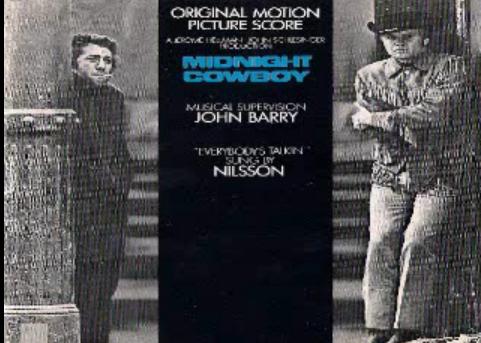
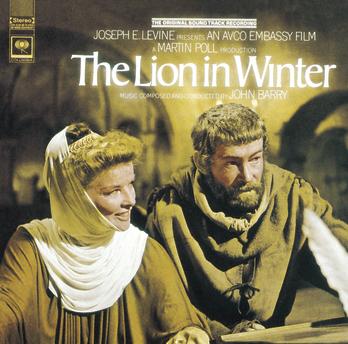
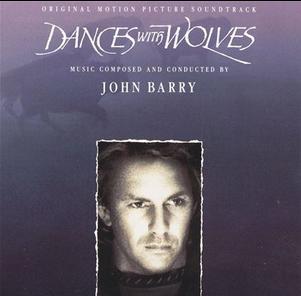
Of course, Barry was doing much more than just the Bond films and you can hear some of this tendency in "Midnight Cowboy"," The Lion in Winter" and even in some versions of "Dances With Wolves". The variation of just two longs comes through in "Out Of Africa" and "Indecent Proposal".
Sometime, if you have the time, query Google for these soundtracks and others by Barry and listen to the music. All of his music is very sweeping and majestic, well worth the time spent listening to this musical genius, but with this discussion it may give you a little more insight on his style.